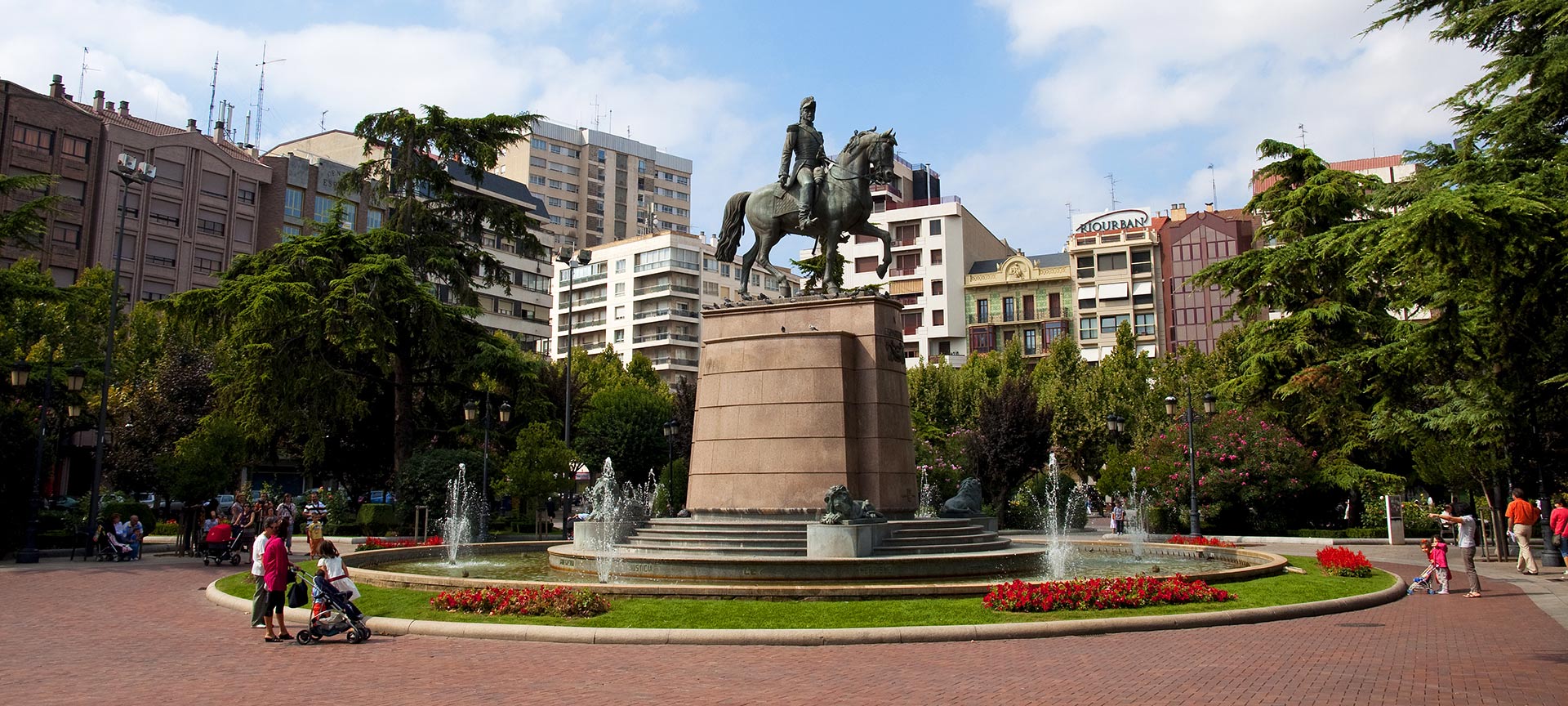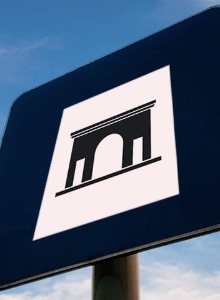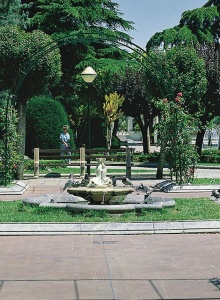Logroño, capital of La Rioja, is a city rich in history and traditions that have been preserved since the Middle Ages. The Camino de Santiago converted it into one of the most important towns on the route, leaving behind an interesting collection of monuments closely associated with this pilgrimage.
The Codex Calixtinus (12th century), the first guide to the Camino de Santiago, already mentions Logroño in its pages. Merchants, artists and pilgrims have trodden the cobblestone streets of the capital of La Rioja for centuries, making the city a major crossroads for culture.The city is divided in two by the River Ebro, which is crossed by two bridges that connect Logroño with Navarre and Álava. The oldest of them, the Stone Bridge, allows those on the St James' Way route to reach the centre of the city. Dating back to the 11th century, it was originally fortified by four arches and three towers. Another bridge, made of iron and built in the 19th century, also crosses the river.From the old wall that used to surround the city, only the Cubo de Revellín tower and the Charles V gate remain to this date. During the city's patron festivals, events are held here that hark back to the French siege of the city.Spanning out from Rúa Vieja, a traditional street along which pilgrims heading to Santiago de Compostela would pass, are the most important testaments to the architecture typical of the Camino de Santiago, such as the Pilgrims' hostel or the famous Pilgrims' fountain. The Church of Santiago is another sign of just how important this pilgrimage is in the city. This monumental building, erected in the 16th century, has a single nave and its façade shows a formidable image of Santiago Matamoros. Inside, the image of the Virgin of Hope, patron saint of Logroño, is venerated.The historic quarter is home to important cultural sites, such as the Cathedral of Santa María la Redonda (15th-18th centuries), which rises up over Plaza del Mercado with its imposing baroque towers. The current cathedral site sits on an old round Romanesque church. The carvings by Gregorio Fernández and a representation of the Crucifixion by Renaissance maestro Miguel Ángel stand out amongst the significant sculptural work that can be seen in the building.There are temples abound in Logroño, with Santa María de Palacio worth particular mention; the oldest in the capital of La Rioja, its Gothic spire presides over the Logroño skyline. Inside you can admire a magnificent cloister, a Flemish altarpiece and several Romanesque pieces. Close by is the Mudejar tower of the Church of San Bartolomé, dedicated to the patron saint of the city. Constructed in the 12th century, it preserves an exquisite sculpted doorway and is the only example of Romanesque art in the city.Logroño is also home to excellent examples of civil architecture, including the Palace of the Marqués de Legarda, the Chapiteles and the Museum of La Rioja, installed in Palacio de Espartero, a baroque construction dating to the 18th century.Logroño's avenues and squares are also a great way of enjoying the atmosphere of its streets. The Paseo del Espolón is one of the most emblematic spots in the city and Plaza del Mercado is a meeting place for its residents.
Cuisine and countryside
The rich Riojan orchard allows us to prepare some of the specialties that make up the renowned Rioja culinary tradition. Asparagus, beans, peppers, artichokes and other vegetables and legumes serve as the basis for a long list of dishes such as vegetable stew, patatas a la riojana, lamb chops and kid roasted with vine shoots or stuffed peppers. Typical desserts include pears in wine, fardelejos de Arnedo (puff pastry with almond paste) and Soto marzipan (made with sugar and ground almonds).Talking about La Riojais synonymous with great Spanish wines. For decades, Rioja wine, protected by its own Designation of Origin, has set the standard both across Spain and abroad. The deep Jacobean tradition that exists in La Rioja is perceived in each of the towns that the Compostela route crosses in this province. Leaving Logroño behind, the Camino Francés runs through Navarrete, with remains of an old pilgrim hospital, and Nájera, former royal court. Here, visitors can admire the Monastery of Santa María la Real, well-known for its impressive cloister and for serving as a refuge for pilgrims. Continuing on this route, walkers are required to detour a few kilometres to San Millán de la Cogolla to take in the unrivalled beauty of the complex formed by the Monasteries of Suso and Yuso, declared a World Heritage Site. Santo Domingo de la Calzada is the last great stage of the Camino de Santiago in La Rioja. This well-kept town is famed for its walls, its famed road and the Cathedral of San Salvador. Visitors can stop off at Casa del Santo and the Parador de Turismo, a former pilgrim hospital built in the 12th century alongside the cathedral grounds converted into a State-run luxury hotel.Leaving the Camino de Santiago behind, other particularly well known towns in La Rioja include Calahorra, capital of Rioja Baja, home to another Parador de Turismo; the neighbouring Alfaro, home to the collegiate church of San Miguel Arcángel (16th-17th centuries) in the town's old quarter; and Haro, a stately town that has become the hub of wine production in La Rioja.To the south of the region you can travel the Dinosaur Route, an itinerary that allows you to admire various footprints left by these prehistoric animals.Another attraction of La Rioja is its natural beauty. The Sierra de Cebollera Natural Park, in the Los Cameros region, bordering the province of Soria, is home to one of the largest examples of glacial relief on the Spanish mainland.













